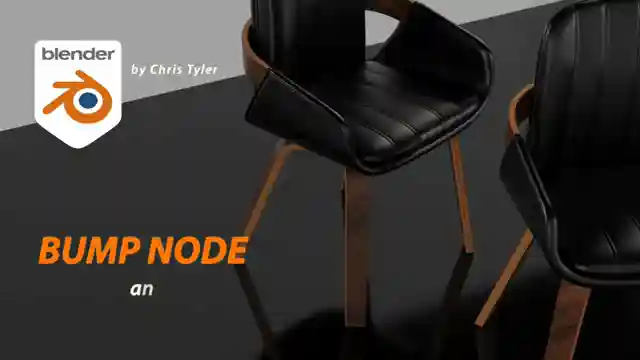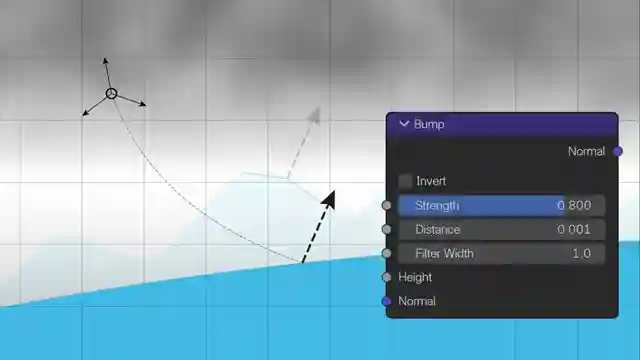Mastering Blender's Bump Node: Filter Width Parameter Explained

- Authors
- Published on
- Published on
In this thrilling episode of Christopher 3D, we delve into the intricate world of Blender's bump node and the revolutionary filter width parameter that has sent shockwaves through the digital design community. The team uncovers the mysteries behind this new setting, shedding light on its potential to transform bump mapping as we know it. With the filter width now in play, users are granted unprecedented control over the subtleties of bump information, allowing for a level of detail previously unattainable.
As our intrepid explorers navigate the complexities of Blender 4.4's latest update, they reveal the pitfalls of default distance values set too high, urging viewers to embrace the more practical starting point of 0.00001 for a smoother ride. The impact of filter width on surface shading is vividly demonstrated, showcasing the evolution from 1.0 to 0.5, 0.25, and the new default of 0.1. Through a series of visual experiments on leather textures, the team illustrates how varying filter width values can make or break the realism of a digital scene.
Venturing deeper into the technical realm, Christopher 3D uncovers the dynamic nature of bump mapping, where grayscale images come to life as simulated bumps and dips on surfaces. The filter width parameter emerges as a game-changer, enabling the bump node to capture minute details and enhance shading quality with finesse. By dissecting the intricate process of bump to normal map calculation, our hosts emphasize the critical role of distance settings in achieving lifelike textures at a real-world scale. The audience is urged to embark on a journey of experimentation, exploring filter width values beyond the default to unlock a world of artistic possibilities in digital design.

Image copyright Youtube

Image copyright Youtube

Image copyright Youtube

Image copyright Youtube
Watch Bump Node & Filter Width, what you need to know. on Youtube
Viewer Reactions for Bump Node & Filter Width, what you need to know.
Importance of getting macro surface scales correct in product rendering
Need for understanding scene image position and pixel limitations for end use
Texture image origination (procedural or fixed) affecting scale texture on products
Request for better communication of big changes in Blender updates
Appreciation for explanatory graphics in the video
Comment on the height vs. strength in rendering
Confusion around the bump node strength value explained
Suggestion for distance in Blender to be based on centimeters
Comment on Blender's issue with undefined numbers
Preference for manually mixing Denoising Data in the compositor over using automatic denoiser
Related Articles

Master Blender Workflow: Bevel Modifier, Limited Dissolve & Object Changes
Discover workflow efficiency tips in Blender! Learn about using the bevel modifier for angled edges, limited dissolve for bezier curves, and applying changes to multiple objects simultaneously. Master 3D modeling tricks for seamless design.

Mastering Direct Polygon Modeling: Retro Camera Tutorial
Discover the power of direct polygon modeling vs. subdivision surfaces in mechanical modeling with Christopher 3D. Learn how to import Adobe Illustrator profiles into Blender, tackle tessellation challenges, and master precision modeling techniques to create a stunning retro camera model.

Mastering UV Mapping for Design Precision
Learn how Christopher 3D's UV mapping technique establishes precise physical sizes for design work, ensuring uniform texel density and accurate printing outcomes.

Master UV Mapping in Blender: Tips for Precise Texture Application
Learn UV mapping in Blender with Christopher 3D: establish object sizes, apply checkerboard patterns, maintain texture consistency, project UVs, add seams for closed objects. Master precise mapping for professional design projects.
